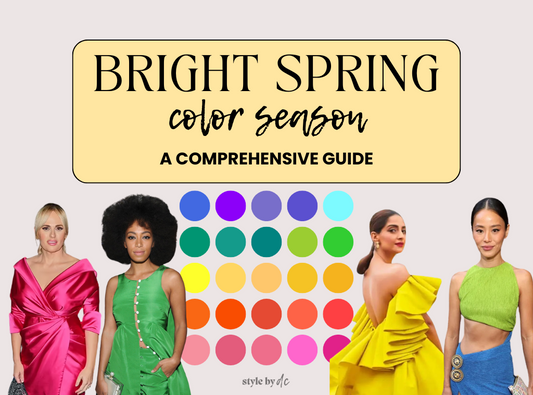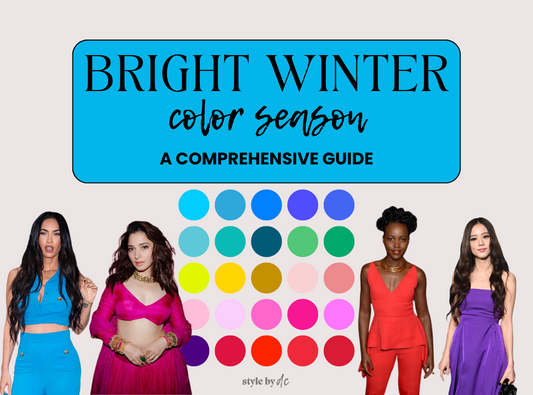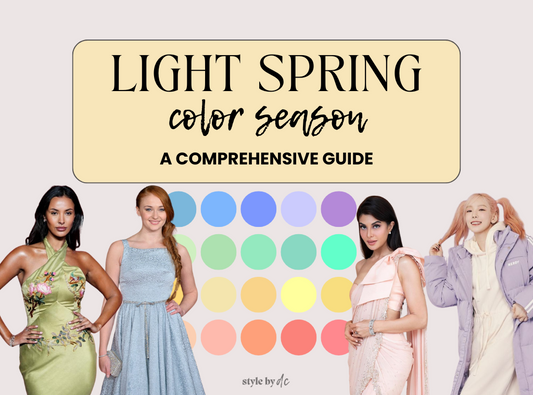What Is the Apple Body Shape?
The Apple body shape—sometimes referred to as the “O” shape—is characterized by a fuller midsection, less-defined waist, and slimmer limbs, especially in the hips and legs. Those with this body shape often have a torso that appears broader or rounder, with weight tending to gather in the stomach and/or bust area, while the legs and arms appear proportionally leaner or more tapered.
Unlike other body types that emphasize defined curves or symmetry, apple-shaped individuals are often top-heavy, meaning the upper body visually outweighs the lower half. While every body is unique, this shape presents some recurring styling considerations that, once understood, can dramatically improve fit, comfort, and visual balance (if that’s your style goal of course!)
Comparison to Other Classic Body Shapes
Okay so what does it actually mean to have an “Apple” body shape? Here’s a quick contrast between the Apple shape and the other four most commonly referenced body types:
|
Body Shape |
Key Traits |
|
Apple (O) |
Fuller bust and midsection, undefined waist, narrower hips, and proportionally slimmer legs |
|
Pear (A) |
Hips are significantly wider than bust and shoulders, with weight carried in the thighs or butt |
|
Hourglass (X) |
Bust and hips are similar in width with a well-defined waist |
|
Rectangle (H) |
Shoulders, waist, and hips all roughly the same width; minimal natural waist definition |
|
Inverted Triangle (V) |
Broad shoulders and bust tapering down to narrower hips and legs |
The Apple shape is most visually top-weighted, while shapes like Pear or Hourglass are more bottom-weighted or curvy-symmetrical.

Kibbe Types That Resemble the Apple Shape
The Kibbe system, which focuses on essence, movement, and bone structure, doesn’t map 1:1 with body shapes, but many apple-shaped individuals share features with the following types:
-
Soft Dramatic – If you have a larger bust, broad shoulders, and are on the taller side
-
Theatrical Romantic – If the body appears rounded, with softness through the bust and waist
-
Soft Natural – If there’s moderate bone structure with added softness in the torso
Remember: Kibbe types are holistic and involve more than body fat distribution. An apple-shaped person could fall into different Kibbe categories depending on their bone structure, facial features, and overall energy. The benefit of the classic body types is that we’re focusing solely on the body and this doesn’t necessarily need to impact your sense of style. It also adds a bit of simplicity as Kibbe can be quite hard to understand and fit into a particular type.
The downside of the classic body shapes is that they don’t account for every possible combination of body type - however, they do give some straightforward guidance that can be useful as a starting point.
How to Tell if You Have an Apple Body Shape
Not sure if this applies to you? You might be apple-shaped if several of the following are true:
Proportions:
-
Your bust and/or shoulders are noticeably broader than your hips
-
Your waist is not clearly defined, and your stomach may feel like the “widest” point on your torso
-
Your hips are slim or flat, and you may have a narrower backside
-
You have arms and legs that appear slender or taper naturally from the torso
Fit Challenges:
-
You struggle to find clothes that fit both your waist and hips comfortably—pants may feel loose in the hips if they fit the waist
-
Fitted tops may pull across the bust or stomach, but feel loose around the hips
-
Belts at the waist tend to emphasize fullness rather than define shape
Weight Distribution:
-
When you gain weight, it tends to show up in your belly or chest first
-
Your lower body stays relatively unchanged, even with weight fluctuations
Style Tips for Apple Body Shapes
The styling goal with this body shape isn’t to “hide” anything, but to create visual balance, draw the eye upward or downward (away from the midsection), and allow garments to follow the lines of your body without clinging. The following tips are only helpful if it’s your goal to have visual balance - and there’s no right or wrong goal when it comes to style and fashion - just keep that in mind!
Tops
Your tops should skim, not cling, and direct attention to your neckline, shoulders, or face. Fabrics with movement and thoughtful shaping work best.
Best necklines:
-
V-necks: Elongate the neckline and draw the eye vertically
-
Scoop necks: Soften the bust and balance proportions
-
Surplice/wrap styles: Create a visual waist and flatter the bust
Recommended styles:
-
Empire waist tops: Gather just under the bust, creating the illusion of a waist at a higher, narrower point
-
A-line or trapeze cuts: Flow away from the stomach and balance the torso
-
Peplum styles (if subtle): Can provide shape and visual separation from the midsection
-
Open cardigans, lightweight jackets: Vertical lines that draw the eye down
Avoid:
-
Cropped tops that end at the widest part of the belly
-
Thick belts or waistbands at the natural waist unless part of a carefully styled outfit
-
Boxy fits with no movement or shape

Bottoms
You likely have slimmer hips and legs, which means this is a great area to showcase with tailored fits and thoughtful structure.
Pant styles that flatter:
-
Straight-leg jeans or trousers: Maintain a clean line from hip to ankle
-
Slim or skinny fit pants: Especially flattering when paired with longer tops
-
Bootcut or slight flare: Balances broader shoulders. This is a good option if you are a bit taller.
-
High-waisted cuts: Provide support around the stomach and elongate the legs
Skirts:
-
A-line skirts: Flow away from the stomach and create a gentle curve
-
Bias-cut skirts: Offer movement and fit without clinging

Dresses
Dresses can be especially flattering for apple shapes when they either draw focus upward or create structure around the bust and underbust.
Best dress silhouettes:
-
Wrap dresses: Offer definition at the narrowest point and flexibility in fit
-
Empire waist dresses: Emphasize bust and allow the fabric to fall loosely over the midsection
-
Fit-and-flare styles: Especially effective with stretch fabrics or defined bust seaming
Details to look for:
-
Side ruching or draping
-
Color-blocked panels that slim the center
-
Structured seams under the bust

Outerwear & Layers
Outerwear should add structure to your frame without adding bulk to the midsection.
-
Single-breasted jackets with shaping at the waist
-
Longline blazers that hit below the hip
-
Waterfall or open cardigans that elongate and soften
-
Coats with vertical details like seaming or button lines
Avoid cropped puffers or jackets that cinch at the natural waist unless you're layering intentionally.

Brands That Work Well for Apple Shapes
Here are a few brands that cater to curves and top-heavy proportions with more forgiving cuts:
|
Brand |
Why It Works |
|
Eloquii |
Plus-focused with excellent tailoring for full busts and rounded midsections |
|
Universal Standard |
Size-inclusive with clean silhouettes, excellent stretch, and minimal bulk |
|
NYDJ |
Jeans with built-in tummy panels and proportional shaping for a balanced silhouette |
|
Madewell |
Offers both high-rise and curvy cuts with modern fits in denim and elevated basics |
|
J.Jill |
Relaxed fits and flowing lines ideal for casual chic styling |
|
Spanx (apparel) |
Polished pants and leggings with built-in smoothing features |
|
Boden |
Flattering for midsections, often using empire waists and strategic prints |

Celebrity Style Inspiration
Looking for real-life inspiration? These celebrities share features common to the apple shape and demonstrate effective styling:
-
Oprah Winfrey – Often seen in belted dresses with strong vertical lines, soft tailoring, and wrap silhouettes
-
Rebel Wilson – Emphasizes shape through structured fit-and-flare dresses and elongating trousers
-
Mariah Carey – Known for her curves with a prominent bust and undefined waist. Often uses bodycon styles or ruching to shape the silhouette
-
Amy Schumer – Leans into draped fits and streamlined jackets that flatter her bust and soften her midsection

Final Tips
-
Layer intentionally: Add vertical lines with dusters, vests, and open jackets.
-
Fabric matters: Look for drape over cling; knits and matte jerseys are your best friend.
-
Embrace tailoring: Even off-the-rack pieces can be altered to hug where you want and skim where you don’t.
- Showcase strong features: Whether it’s your neckline, your lower legs, or your décolletage—play to your natural highlights.



